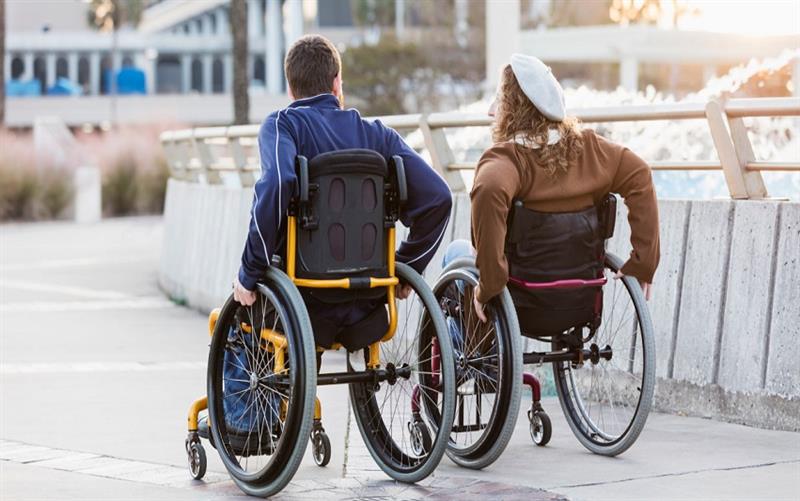
When exploring wheelchair options, it's essential to consult with healthcare professionals, therapists, and mobility specialists to determine the most suitable type and features based on the user's requirements and lifestyle. Additionally, trying out different models and considering factors like adjustability, maneuverability, and ease of maintenance can help in making an informed decision for better mobility and quality of life.
Exploring the range of wheelchair choices for better mobility involves considering various factors such as lifestyle, environment, and personal preferences. Here's a breakdown of some common types of wheelchairs available:
1. Manual Wheelchairs:
- Standard Manual Wheelchairs: These are the most common type, propelled by the user's arms. These are the most traditional type of wheelchair, usually made of steel or aluminum. They're propelled by the user pushing the wheels with their hands. They're simple, durable, and versatile for everyday use.
- Lightweight Manual Wheelchairs: Designed for easier transport and maneuverability, often made from aluminum or titanium. These wheelchairs are designed to be easier to transport and maneuver. They're often made from lightweight materials like aluminum or titanium, making them ideal for individuals who need to frequently lift or store their wheelchair.
- Sports Wheelchairs: Built for athletic activities, with features like lightweight frames, adjustable seating positions, and specialized wheels for better performance. Designed for athletic activities such as basketball, tennis, or racing. They're lightweight, agile, and often have specialized features like adjustable seating positions, custom wheel configurations, and lightweight frames for better performance.
- Pediatric Wheelchairs: Scaled-down versions designed specifically for children, providing comfort and support while promoting independence.Scaled-down versions of adult wheelchairs, designed to fit the needs of children. They offer appropriate support and comfort while promoting independence and mobility.
2. Powered Wheelchairs:
- Standard Power Wheelchairs: Operated using a joystick or control panel, powered by batteries, suitable for individuals with limited upper body strength. These wheelchairs are powered by batteries and controlled using a joystick or control panel. They're suitable for individuals with limited upper body strength or dexterity, offering easier mobility compared to manual wheelchairs.
- Standing Wheelchairs: Allow users to elevate themselves to a standing position, promoting better circulation, bone density, and social interaction. These wheelchairs allow users to elevate themselves to a standing position, providing numerous health benefits such as improved circulation, pressure relief, and social interaction at eye level.
- All-Terrain Wheelchairs: Designed with rugged frames and large wheels to navigate rough terrain such as grass, gravel, or sand. Designed with rugged frames and large wheels to navigate rough terrain like grass, gravel, or sand. They offer greater independence and access to outdoor activities for wheelchair users.
- Heavy-Duty Power Wheelchairs: Built for users with higher weight capacities, providing stability and durability for daily activities. Built to accommodate users with higher weight capacities, these wheelchairs offer stability, durability, and support for daily activities.
3. Specialized Wheelchairs:
- Tilt-in-Space Wheelchairs: Offer adjustable seating angles to redistribute pressure and provide comfort for users with postural or pressure relief needs. These wheelchairs allow for adjustable seating angles, which can help redistribute pressure and promote comfort for users with postural or pressure relief needs. They're often used by individuals with spinal cord injuries or conditions like muscular dystrophy.
- Reclining Wheelchairs: Allow users to recline comfortably for rest or positioning requirements. Designed to allow users to recline comfortably for rest or positioning requirements. They're beneficial for individuals who spend extended periods in their wheelchair or require frequent position changes.
- Transport Wheelchairs: Lightweight and compact, primarily for transporting individuals over short distances, often used in medical facilities or airports. Lightweight and compact, primarily used for transporting individuals over short distances. They're often found in medical facilities, airports, and other environments where quick mobility is required.
- Bariatric Wheelchairs: Designed for individuals with obesity, with reinforced frames and wider seat dimensions for better support and comfort. Specifically designed for individuals with obesity, these wheelchairs have reinforced frames and wider seat dimensions to provide adequate support and comfort.
4. Custom Wheelchairs:
- Customized to individual specifications: It considering factors such as body dimensions, posture, and specific mobility needs. These wheelchairs are tailored to meet the unique needs of each user. Factors such as body dimensions, posture, mobility requirements, and specific preferences are taken into account during the design process.
- Modifications and Accessories: Custom wheelchairs may include specialized seating systems, adjustable components, custom controls, or added accessories to enhance functionality and comfort based on the user's specific needs and preferences. Can include modifications such as custom seating systems, specialized controls, or added accessories for enhanced functionality and comfort.